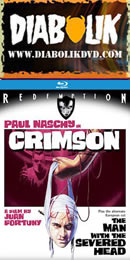
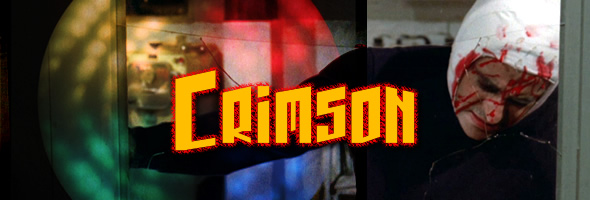
Color, 1973, 98/89m.
Directed by Juan Fortuny
Starring Paul Naschy, Sylvia Solar, Olivier Mathot, Evelyn Scott, Yul Sanders, Ricardo Palmerola, Roberto Mauri
Kino Lorber (Blu-ray & DVD) (US RA/R1 HD) / WS (1.66:1) (16:9), Image (DVD) (US R1 NTSC) / WS (1.78:1) (16:9)
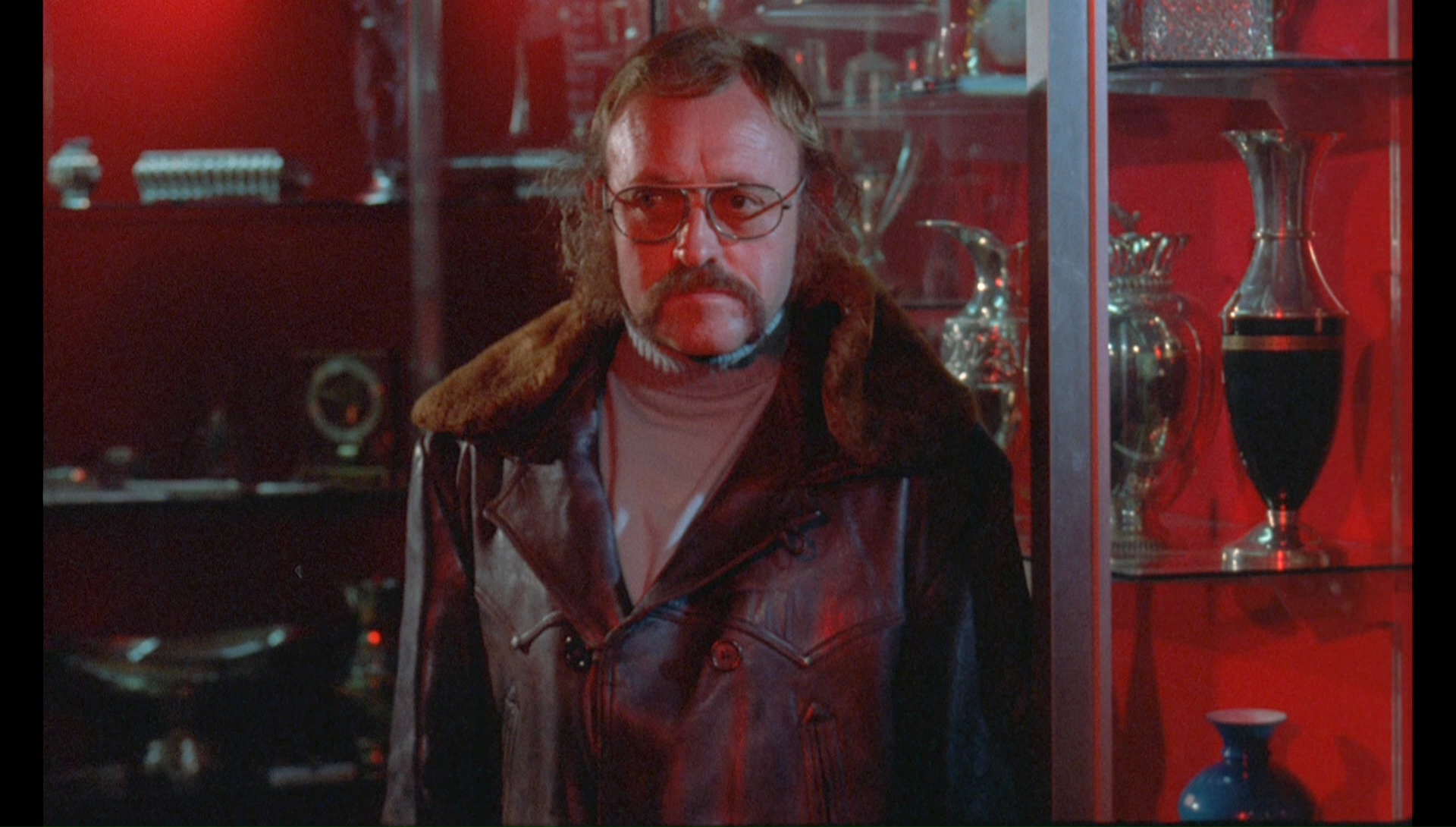
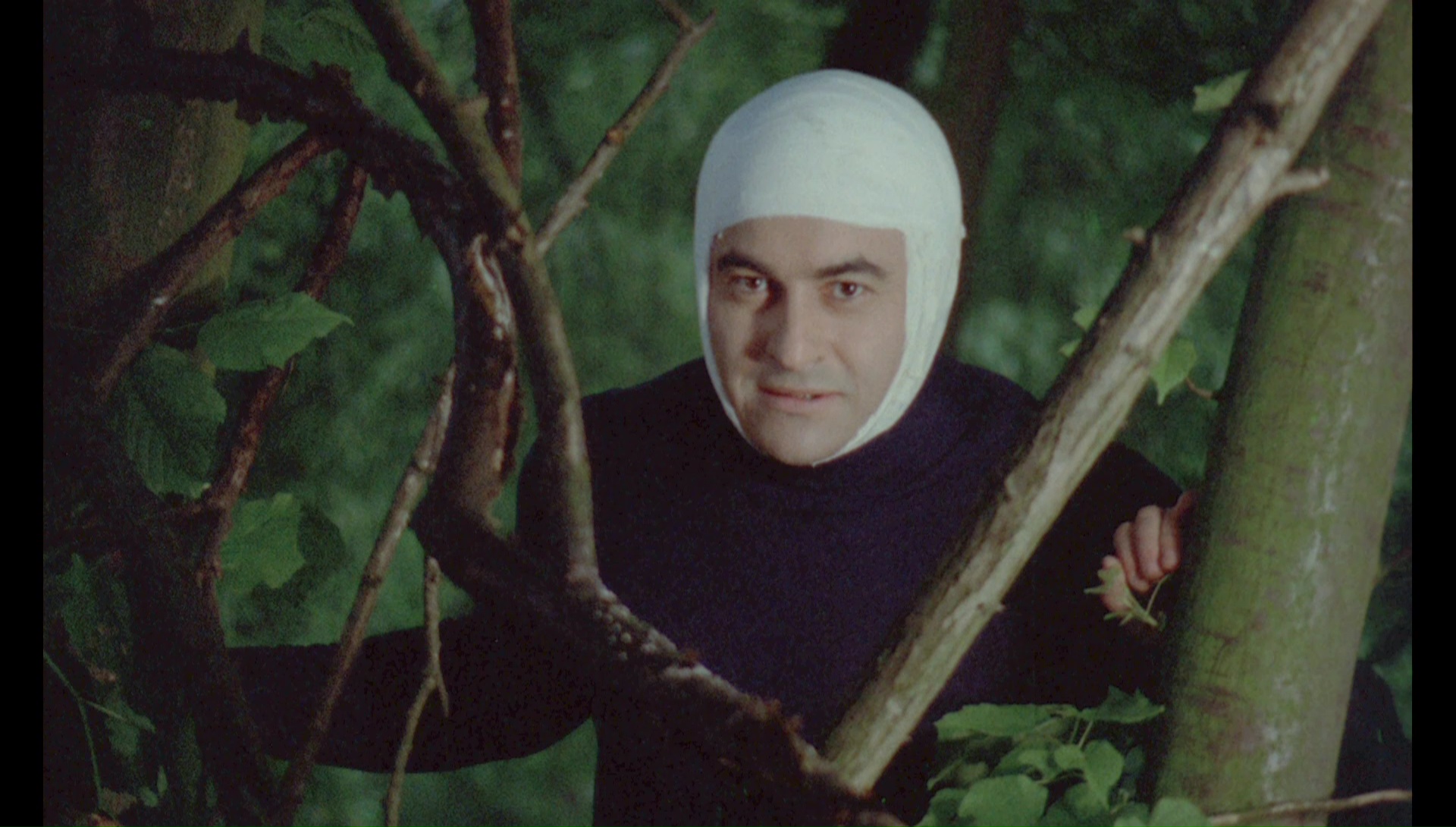 A strong contender for the weirdest production company in Eurocult history, France's Eurociné churned out a berserk string of violent, sexy oddities including many films by Jess Franco and the immortal Zombie Lake. One of the company's oddest offerings has to be the French/Spanish heist-horror hybrid Crimson, which released in France as L'homme à la tête coupée (translated for the UK release as The Man with the Severed Head) and in Spain as Las ratas no duermen de noche (or "The Rats Don't Sleep at Night"). No matter how you see it, this is a truly peculiar, fascinating vehicle for Spanish horror legend Paul Naschy, who gets top billing despite the fact he doesn't really get to do anything until the lively final 20 minutes.
A strong contender for the weirdest production company in Eurocult history, France's Eurociné churned out a berserk string of violent, sexy oddities including many films by Jess Franco and the immortal Zombie Lake. One of the company's oddest offerings has to be the French/Spanish heist-horror hybrid Crimson, which released in France as L'homme à la tête coupée (translated for the UK release as The Man with the Severed Head) and in Spain as Las ratas no duermen de noche (or "The Rats Don't Sleep at Night"). No matter how you see it, this is a truly peculiar, fascinating vehicle for Spanish horror legend Paul Naschy, who gets top billing despite the fact he doesn't really get to do anything until the lively final 20 minutes.
The action begins with a nocturnal safecracking in progress by a gang of crooks, whose plot is foiled by an accidental alarm trigger. Leader Jack Surnett (Naschy) gets shot in the head during the ensuing police chase, but his cohorts manage to get him away to the countryside to look for a drastic solution. They end up at the home of a revolutionary doctor (Palmerola) whom they force to perform a brain transplant by holding the doc's daughter hostage, and the lucky donor is chosen: The Sadist (Mauri), their underworld nemesis. Needless to say, they don't really see the potential flaws in this plan -- even when Jack awakens a bit different than his usual self, and The Sadist's revenge-seeking goons start closing in on the remote house as well.
Despite the lack of Naschy for much of the running time, this one is rather hypnotic in its genre-crashing oddness with a 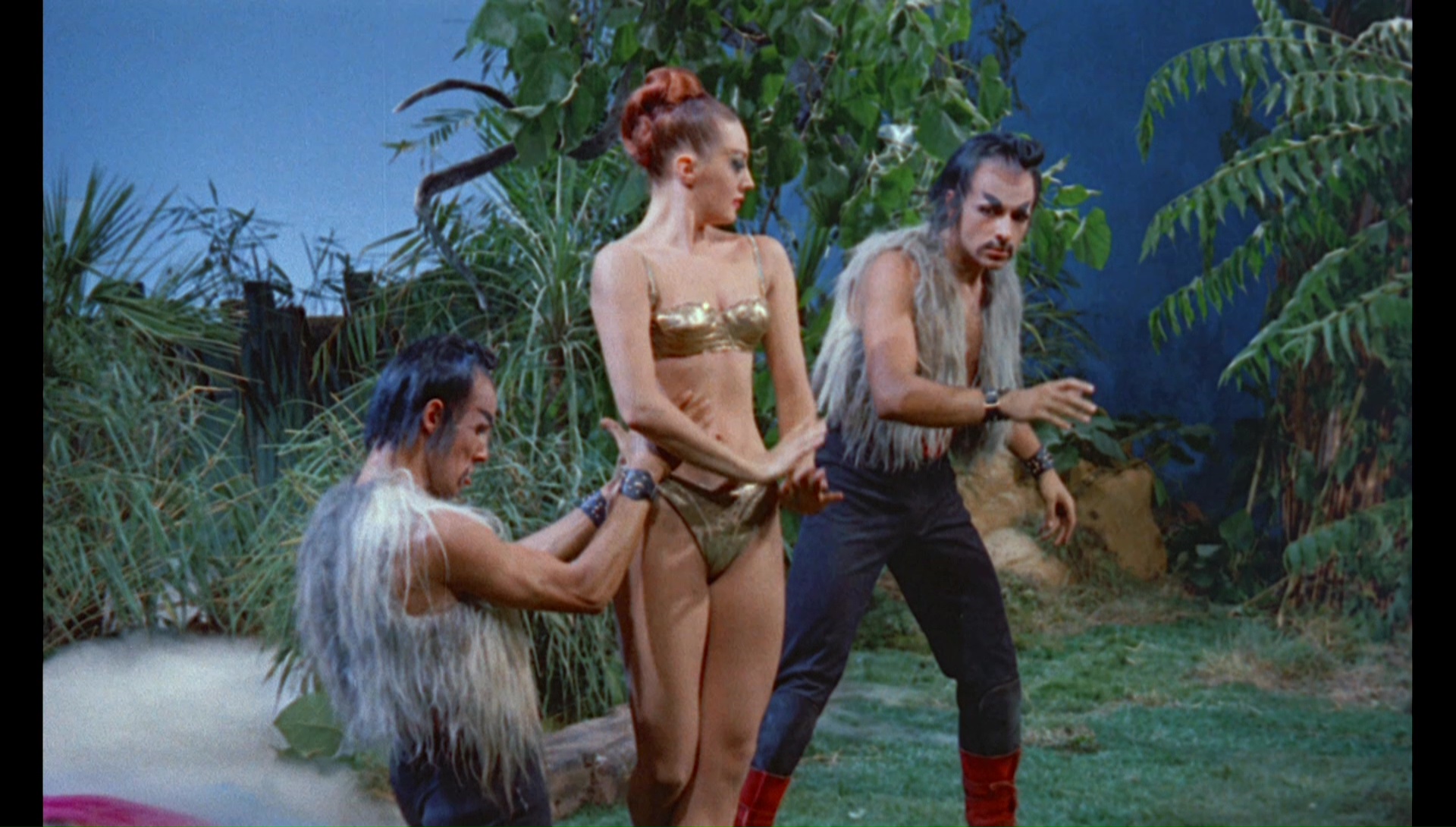 game cast including Franco regular (and occasional hardcore actor) Olivier Mathot and Spanish horror vet Sylvia Solar standing out among the cast.
game cast including Franco regular (and occasional hardcore actor) Olivier Mathot and Spanish horror vet Sylvia Solar standing out among the cast. 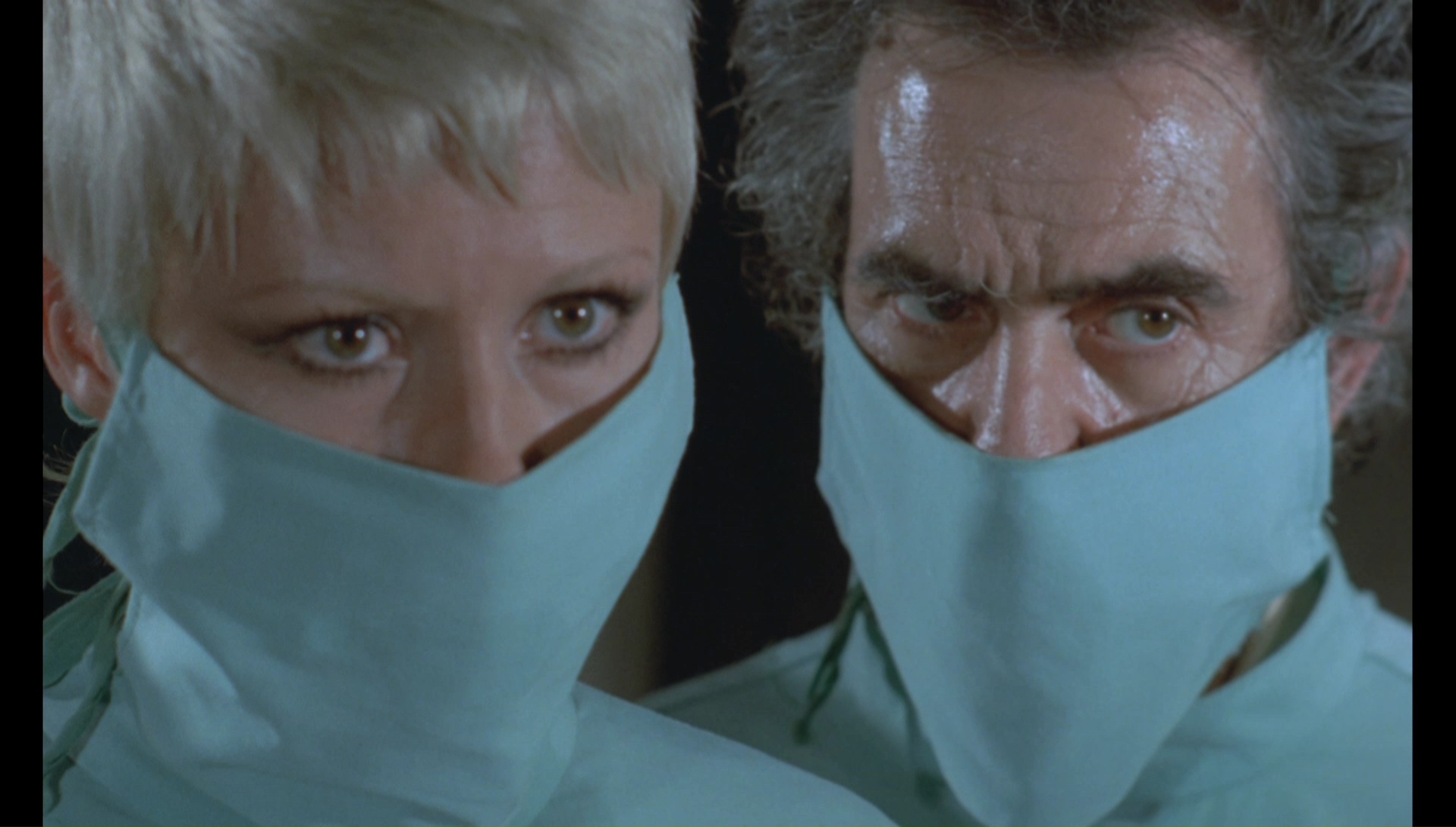 Reminding you that this is a Eurociné production is the jazzy score by Daniel White, which often seems jarring but in the most amusing way possible. You also get some unexpected and frankly baffling touches as well, most notably a prolonged nightclub performance involving a woman in a shiny gold bikini ogled by two dancing men in mongol costumes. Ah, the '70s.
Reminding you that this is a Eurociné production is the jazzy score by Daniel White, which often seems jarring but in the most amusing way possible. You also get some unexpected and frankly baffling touches as well, most notably a prolonged nightclub performance involving a woman in a shiny gold bikini ogled by two dancing men in mongol costumes. Ah, the '70s.
Crimson first appeared on American home video courtesy of one of those beloved oversized VHS editions from Wizard Video (as Crimson, the Color of Terror), retaining the striking original artwork created by Eurociné (whose output was a primary component of the Wizard line). The alternate European artwork graced the cover of the 2002 American DVD release from Image Entertainment as part of its EuroShock Collection, featuring the usual 89-minute cut with its (hilariously dubbed) English or (mostly original) French dialogue tracks with optional English subtitles. That release also proved to be something of a surprise with the addition of a reel of extra erotic footage shot for the French release, consisting of four sex scenes -- one with Naschy going to town on his co-stars bare breasts before his butt double takes over, and another featuring some graphic frontal nudity that nearly goes into Larry Flynt territory. The DVD also contains the alternate French title sequence (over a particularly tacky impressionist painting) and the French theatrical trailer.
It took 14 years for another go-round with the film for American viewers, and the Kino 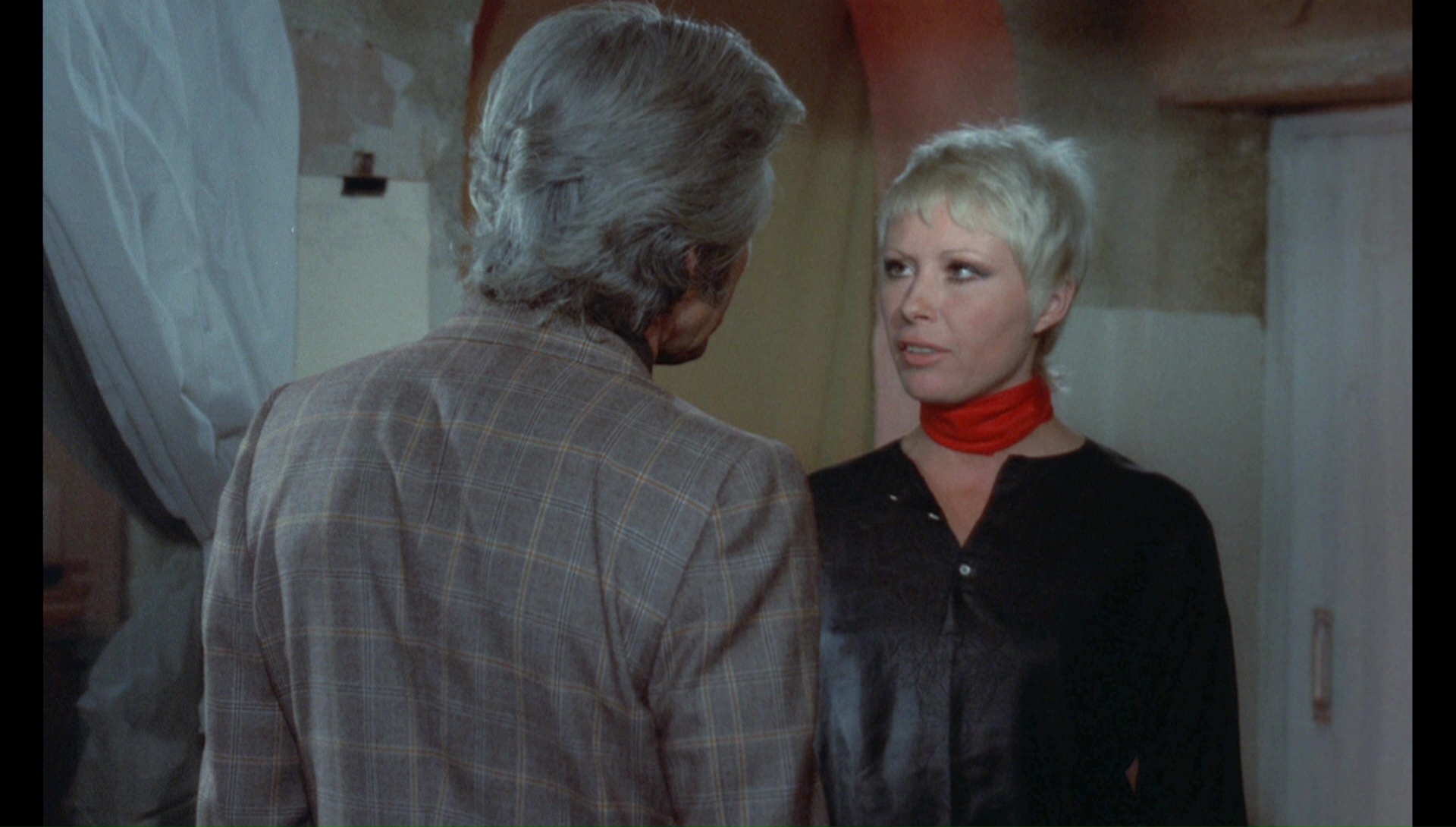 Lorber edition (as separate Blu-ray and DVD discs) via Redemption Films takes the interesting step of presenting the usual English-dubbed version and the more explicit French version (with optional subtitles) as totally separate viewing options.
Lorber edition (as separate Blu-ray and DVD discs) via Redemption Films takes the interesting step of presenting the usual English-dubbed version and the more explicit French version (with optional subtitles) as totally separate viewing options. 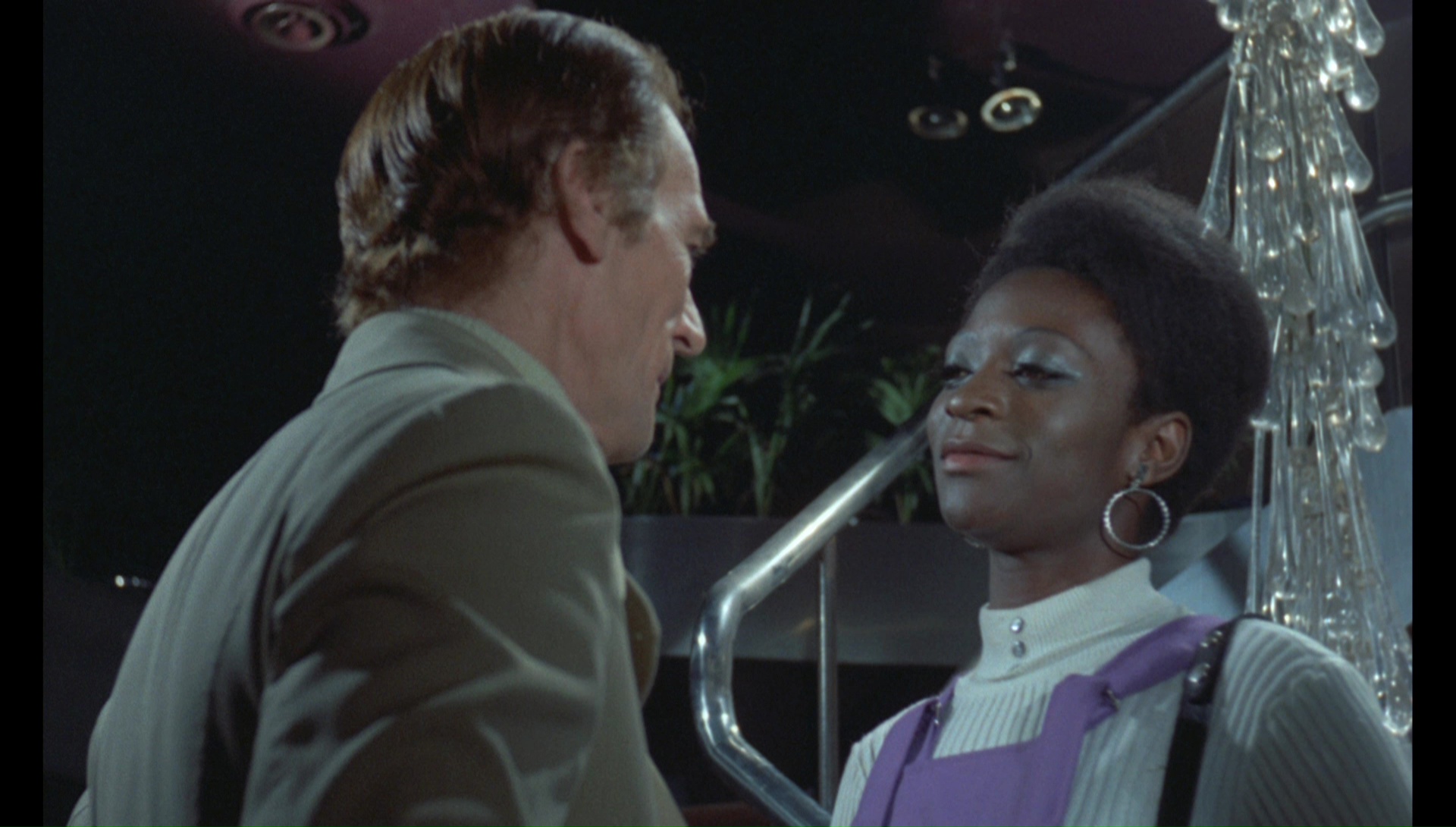 The French one is definitely the way to go as the extra spicy material gooses up the film's sleaze quotient, and it works better with all of the performances as well. Oddly, the usual Crimson opening titles are present for both versions. The transfer is a tremendous improvement over the Image disc with the title color gaining in particular intensity, while the framing is significantly different and better judged here. It's still a Eurociné production which means crummy production values and inconsistent film stock, but this is probably about as pristine as it can get. The 1.66:1 framing on the Blu-ray reveals a huge amounts of additional information on the bottom while losing a much smaller sliver on the top, resulting in compositions that look better than the awkward and claustrophobic presentation on the DVD (as you can see from this frame grab compared to the first one above). As usual the day for night color timing in a few scenes looks quite funky with a sickly grayish hue. The sole extra is a new audio commentary for the English version by Richard Harland Smith, who brings his usual blend of scholarly insight and dry wit to a guided tour through the delights of Eurocult cinema and the various players involved in this film beyond its notable leading man.
The French one is definitely the way to go as the extra spicy material gooses up the film's sleaze quotient, and it works better with all of the performances as well. Oddly, the usual Crimson opening titles are present for both versions. The transfer is a tremendous improvement over the Image disc with the title color gaining in particular intensity, while the framing is significantly different and better judged here. It's still a Eurociné production which means crummy production values and inconsistent film stock, but this is probably about as pristine as it can get. The 1.66:1 framing on the Blu-ray reveals a huge amounts of additional information on the bottom while losing a much smaller sliver on the top, resulting in compositions that look better than the awkward and claustrophobic presentation on the DVD (as you can see from this frame grab compared to the first one above). As usual the day for night color timing in a few scenes looks quite funky with a sickly grayish hue. The sole extra is a new audio commentary for the English version by Richard Harland Smith, who brings his usual blend of scholarly insight and dry wit to a guided tour through the delights of Eurocult cinema and the various players involved in this film beyond its notable leading man.
Reviewed on July 2, 2016.








